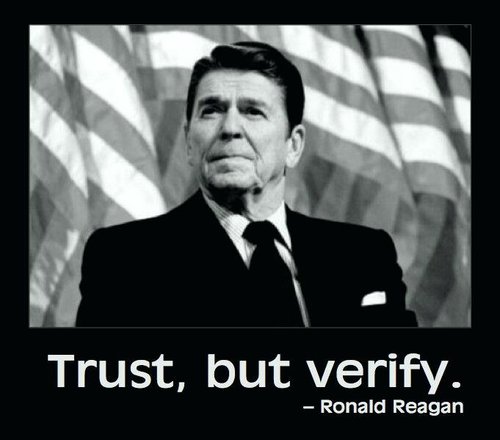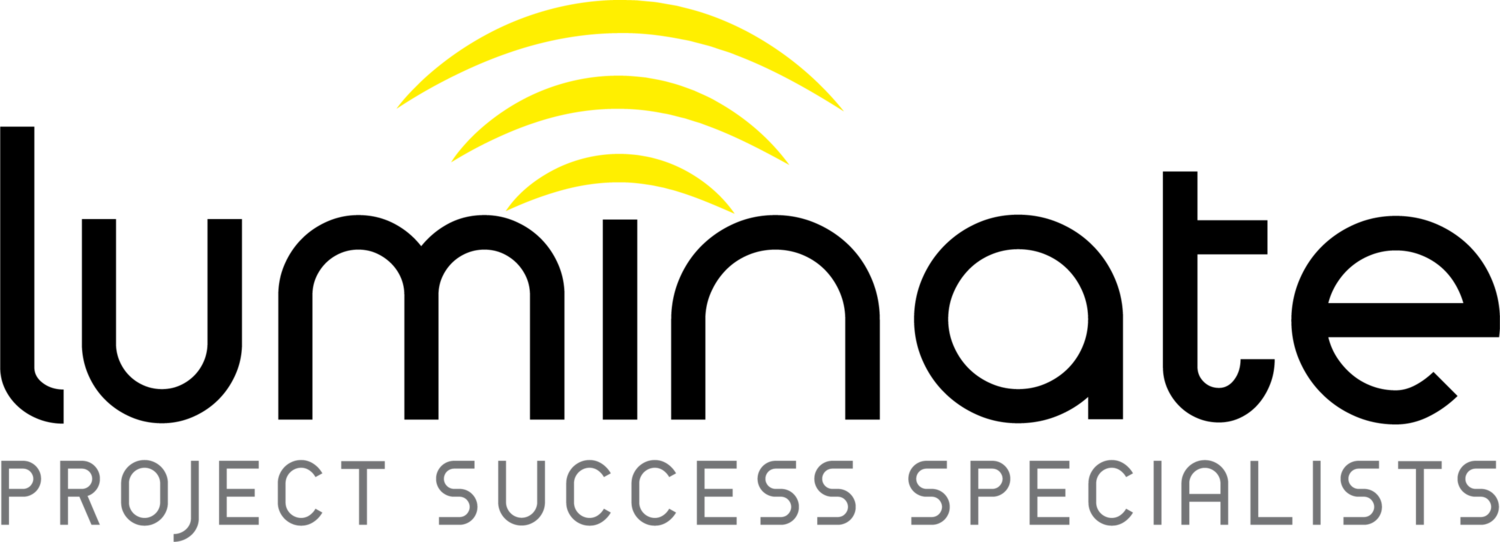
Aug 18, 2019
So here’s the question… what do you do when your project is out of control? When scope creep has the better of you, your budget’s shot to hell, and delivery was three months back? And – perhaps worst of all – when none of your project managers can tell you where it’s going wrong, where it’s going to land and what it’s going to cost?
The scary thing is, this isn’t an unusual question. It’s a situation most of our clients have been in. It’s a really rough place to be. Their credibility’s on the line, and just when they’re needed most, their peers are losing confidence in them. So, here’s what most people would do.
Fight the fire.
You’re going to need a better hose…
It’s a natural reaction. Especially on large complex projects, where delivery is all. The temptation to forget about the day job, roll up the sleeves and pour water over your issues is almost overwhelming. And, let’s face it. In the short term, quite satisfying.
But there’s a problem with that reaction. It fails to address the real issue… if your project’s got to this place, you’re in real trouble. You’re past the point where a fire hose can achieve anything. In fact, playing whack a mole on a project of this size is only digging a deeper hole, getting you further into a mess you’re just not fixing.
Here’s why, at this point, your interventions will do more harm than good. Your delivery team will resent your getting into the weeds. Micro-management isn’t the solution. They’re burned from long weekends, overtime, nights trying to solve issues they can’t understand. And asking the incumbent PM to lead a recovery won’t get you anywhere. They’re the lead who lost the team, couldn’t tell you how things had got to this place. And don’t have the foggiest on how to turn things around.
The value of stepping back
So, what do you need? How do you navigate this challenge? If you’re brave enough it becomes obvious. You need a fresh viewpoint – someone who can give you the warts and all view of the issues you face.
That’s why the single most valuable action our clients take is appointing Luminate as their independent recovery specialist. Luminate deliver the view they need, illustrating the path forward. We separate emotions from facts to get to the heart of the problem. Experienced and skilled, we know how to turn a project around. Appointing us sends a clear message to the project team and the wider business. Correction of the problem is now owned, and being taken seriously.
And the best bit? Appointing us takes you back out of those weeds. Get’s you back into your day job, doing what you do best. Our intervention might be the best decision you make this week.

Jul 5, 2018
There are two types of project managers. You’ll all recognise the Type 1 PM. The task list jockey who systematically ticks off activities on a pre-determined list and every now and then, when operating in a stable and mature environment, flukes a win. Primarily because the environment they inherited allowed them to ‘paint by numbers’. Everything fitted in place. They followed the happy path. The easy path. All their risks and issues were documented. They had a Gantt chart detailed to the nano-second. And their status report hardly changed from period-to-period. Of course, they deliver. In the same way a jigsaw fits together. They’ll always get there; it’s just a function of time and trial and error.
Good news, right? Yes … and no. Every organisation needs these plodders, colloquially known as a ‘safe pair of hands’. There are always prosaic projects that need to be done. The trouble is that these projects aren’t exciting and don’t attract the Type 2 project manager.
Your Type 2 PM runs at fires. They seek out problems because their DNA is wired to solve them; not just capture them in a register and then put their head in the sand. They commit to and own problems. These are the people you need leading your complex projects. If you have high complexity, significant uncertainty and third-party variables; or if your project is off the rails and you have a fixed deadline that you simply must meet, then you need the Type 2 PM.
The Type 2 PM knows that people make great projects, not methodologies, frameworks, processes or tools. They know how to bring a team on the journey. Because they’ve done it before. Don’t confuse capability and delivery authority with expertise. The latter is about the theory, driven by a myriad of courses generating ‘experts-in-a-day’. The former is the super power that highly capable people bring with them.
So, if you’re the sponsor of a complex project then your first step should be to assess whether you have the right people with the right capabilities leading delivery. If you don’t, or they simply can’t or won’t adapt, then remember the old adage:
“If you can’t change the people, then change the people.”
Top ten signs it’s time to change your project manager
If you’re seeing a pattern of behaviour where your project manager is consistently demonstrating the traits below, then a re-assessment is required.
1. Your project manager can’t tell you the current state of health for their project. Or just as bad, they can’t tell you how it got into the shape it’s in. Worse still, they can’t tell you when it’ll land or how much it’s going to cost. This is nothing short of a capital crime and needs to be addressed accordingly.
2. Your project manager doesn’t actively seek out information from the project workstream leads. If you find that you regularly know more than your PM about what is going on, then you should release them to pursue whatever it was that was distracting them from paying attention.
3. You can’t make heads or tails of the what they’re telling you. They talk in circles and their steerco packs are shambolic. The ability to communicate at all levels of the organisation is a key attribute of a good project manager and concessions cannot be made.
4. The project team are unaware of the project progress and confused about the priorities. Your project manager is not sharing information or providing clear direction to the team. Because of that, they are losing trust in the PM. So should you.
5. You’ve asked your project manager several times for a plan. They keep coming up with an excuse. “The vendor hasn’t provided their information”. “Key resources are away”. “We’re dependent on the findings from the pilot”. At the end of the day, they’re in the business of providing estimates. So if they can’t create a plan and estimate or model where the data isn’t available then you need someone who can.
6. You’re getting feedback from the project team that your project manager has gone rogue. The project is off the rails and the PM is under pressure and making unilateral decisions about things for which they have no expertise. In other words, they’re panicking. The fight or flight reflex has taken hold. Help them take flight.
7. Your PM is very needy and you’re having to play counselor, mediator and coach. Worse still, they’ve got a habit of delegating actions upwards. Somehow you seem to be spending a lot more time working on the project than you’d planned; leaving little time to do your day job. You need to get out of the weeds.
8. Behind closed doors, your stakeholder team are telling you that they’ve lost confidence in the project manager. They’re doing what they can; but they don’t have the experience, capability or resilience to get the job done. Your reputation as sponsor is being undermined. Make the call.
9. Over-promising and under-delivering. Your project manager is an always says ‘yes’ martyr who is afraid to challenge stakeholders, despite being the supposed delivery expert. And that means they have no regard for the impact of their ill-conceived promises on the wider team. Let them fall on their sword.
10. Lastly is the project manager who is never at fault. They ritually recite the narcissist’s prayer: “That didn’t happen. And if it did, it wasn’t that bad. And if it was, that’s not a big deal. And if it is, that’s not my fault. And if it was, I didn’t mean it. And if I did… you deserved it”. You don’t deserve these people.
Take action now. Don’t put your project and reputation at risk a moment longer.

Jun 28, 2018
Shortcuts. We’re all told not to take them. But if taking shortcuts delivers value more quickly, yet doesn’t follow the process … then what part of the equation is wrong? Make the shortcut the process. Otherwise subscribe to the philosophy that it’s better to ask for forgiveness than it is to ask for permission. God knows I’ve made a career out of doing just that. Project sponsors have a strong tendency to remember what got done and who did it, not how it was done. After all, their bonus is directly related to the former.
If the transactional norm is to not follow the process because everyone believes that the process is flawed, i.e. takes too long, serves no purpose, then change the process. Again, make the short-cut the process. Don’t make a scape-goat out of the individual who has been creative enough to find a way around the obstacle preventing value being delivered. Instead, reward that team member for their insight and innovation. Hold them and their behaviour up as exemplars and demonstrate that your business will empower teams and support constant improvement. Even (especially if) it means that what you had put in place is shown to be wrong or sub-optimal. The team needs to know that they free to optimise delivery and that people are valued over process.
Let’s take this a little further. What does this mean for you and your business? Do you or your management team subscribe to transactional leadership styles that focus on tight team supervision (aka as micro-managing) and dictatorial compliance? Do you promote compliance through the operation of a stick and carrot regime? Are you more focused on retaining the status quo, i.e. don’t rock the boat? Then you’re a relic of the past. If you’re not looking to influence the future and instead you’re focused on finding faults and deviations; then you’re no more than the corporate equivalent of a parking warden.
Focus on what matters. Strive to understand your internal and external customer pain points and empathise with the impact that these problems are creating. Work with your team to define smarter ways of working to relieve these pain points. Work with your team to prioritise these changes and identify actionable plans to deliver this change. Then once done, shout from the rafters. Evangelise the good stuff; the stuff that really matters. The incremental improvements that make it a better place to work; that drives motivation and morale. And that which delights your customers. That’s transformational leadership.
Bury the stick once and for all.

Jun 22, 2018
You read the status reports. You attend the steering committee meetings. You even have 1:1 catch-ups with the PM. Yet inexplicably the project that’s been reported green week after week, is now reporting as red! Meaning the original baseline schedule, cost or scope can’t be recovered. And then all too often the PM goes into defense mode. ‘We couldn’t have foreseen it’. ‘We didn’t have the budget’. And perhaps most incredulously: ‘It would’ve taken me too long to bring someone up to speed, so I did it myself’.
In a multi-million, multi-year, business-critical project, the ‘I’ll do it myself’ mentality is more than naive. It’s plain stupid. Large complex projects require specialist skill-sets. They’re not the forum in which to train junior team-members, second resources from within the business who have no demonstrable capability in the domain concerned, or to play the hero and wear multiple hats – especially when the PM is struggling to execute their own role. Martyrdom, by definition, is a death sentence for PMs.
Regardless of whether it’s the wrong people doing the wrong job, or some other problem, by the time the facts are revealed, all too often it’s too late to preserve the baseline. Consequently, full realisation of the benefits underpinning the business case becomes an impossibility.
But project sponsors can avoid these surprises. As per the Russian proverb made famous by Ronald Reagan, Doveryai, no proveryai. Trust but verify. Prudent sponsors will budget for quality assurance activity in the business case. Applying this level of rigour and governance to large and complex projects is a no-brainer. When you think that the weekly cash-burn on these types of projects is typically measured in six figure sums, allocating a fraction of this to a scheduled Project Health Check should be considered a self-funding insurance premium. Early detection of project issues avoids the unwanted surprises and affords the opportunity through coaching and mentoring and/or diligent use of contingency to preserve project value.
Key take-outs:
- Large and complex projects need specialist team members.
- Work closely with your PM; but get a second (and objective) opinion. Doveryai, no proveryai. Trust but verify.
- Allocate funding to scheduled, project assurance activity (Project Fitness Test).
By the way, Mr Gorbachev’s response to Reagan was ‘The reward of a thing well done is to have done it’. (Ralph Waldo Emerson)

Jun 15, 2018
We’ve all experienced fatigue before, but what do people mean when they talk about project fatigue? Within a project it often describes the circumstance where people lose sight of the reason for the project and their focus shifts solely to completion of tasks, which in turn leads to a drop in energy levels and motivation. Knocking items off a to-do list may be satisfying, but it’s not what drives people to get out of bed and go to work each day.

So what can you do to battle project fatigue? First go back to basics and make sure you really understand the outcomes the project is meant to deliver and the business problem the project is meant to solve. Redefine the project’s work programme around a series of delivery goals that are linked to the overall project outcome. Make sure the project team understands these linkages, has an emotional attachment to solving the business problem, and celebrate the achievement of goals as you work toward the end outcome. In short, break the project into manageable chunks and keep the project team outcome focused and motivated towards achievement of goals rather than completion of tasks. Enlist the help of your project sponsor to reinforce these messages and make the team feel that what they are doing is valuable to the organisation.
In agile software development this is done by organising projects into a series of short duration intervals or sprints where the outcome of each sprint is to deliver working software to the customer. There is a constant focus on delivering customer value as early as possible, but each sprint goal still needs to be referenced back to how it is contributing to the overall end project outcome. As goals are met and progress is measured this creates a sense of achievement within the team and keeps them motivated and energised.
This doesn’t mean team members won’t have times when they feel exhausted after putting in a big shift. If this happens the simple answer is to give people a chance to refresh and revitalise. If you continually burn out teams, you quickly become the person nobody wants to work for and people will get fed up with being constantly exhausted and leave.
The key takeaways are that PM’s need to get to know their teams and:
- constantly remind them of the outcome they are all working towards and the business problem the project is trying to solve;
- work with them to set goals on the path towards achieving that outcome;
- keep an eye on how the team (including themselves) are travelling over the course of the project;
- build constant review and reflection cycles into project processes so that the team are learning lessons and striving to improve continuously.
Project Fatigue can also be used to describe the wider condition within an organisation where the number of change initiatives being implemented and the methods used to implement them lead to increased stress, exhaustion, and decreased organisational motivation. This is often referred to as change fatigue and it is an issue that is becoming more prevalent as the pace of change demanded by executives continues to accelerate.
Understanding that there may be an issue is one thing, but how do you go about delivering in an environment where stakeholders may:
- feel they’ve been bombarded with too much change at once and have no clear guidance on priorities between different initiatives;
- have seen too many previous change initiatives fail;
- feel that the project will likely mean they have to try and fit more work into an already overloaded workday.
In a similar way to how project fatigue can be managed within a project team, PM’s need to try to get stakeholders to understand the outcome the project will deliver and what it means to them in terms of the potential it provides to achieve a positive outcome for their organisation. Enthusiastic change advocates from within the stakeholder community should be identified and used as a change leader group that can help develop the change implementation plan. In this way the plan can be participant led and owned and it will have a better chance of adoption.
The plan should be organised around a series of goals linked to the overall change outcome so that progress can be measured and celebrated. Delivering tangible progress will provide change leaders with a sense of achievement and will make them feel valued, and this will in turn motivate them to continue to champion change within the organisation and may inspire others to do the same. The PM is acting as a facilitator in this instance as they are enabling their stakeholders to determine the path for implementing change and they are relying on them to lead and own the execution of the plan.
The key takeaways are that PM’s need to get to know their stakeholders and:
- constantly remind them of the outcome they are all working towards and the business problem the project is trying to solve;
- work with them to set goals on the path towards achieving the outcome;
- keep an eye on how they are travelling over the course of the project;
- build constant review and reflection cycles into project processes so they are learning lessons and striving to improve continuously.
Does all of that sound familiar? I should hope so as this is exactly the same set of takeaways I mentioned earlier when summing up the approach to tackling fatigue within a project! Stay focused, recognise fatigue early, do something about it, and make the project and change delivery journey as enjoyable as possible for everybody involved.








